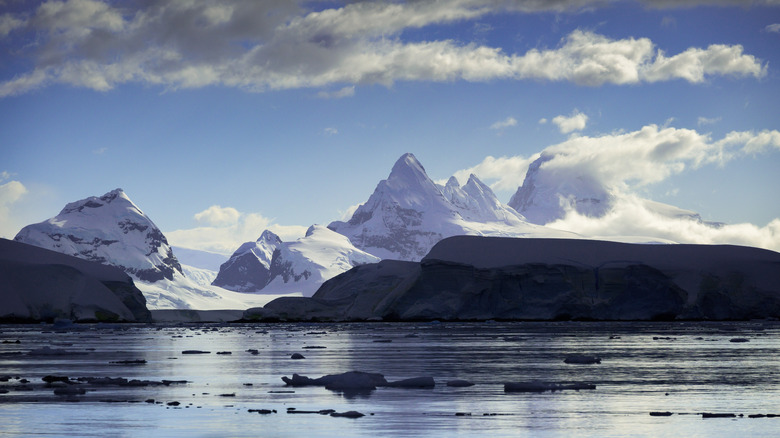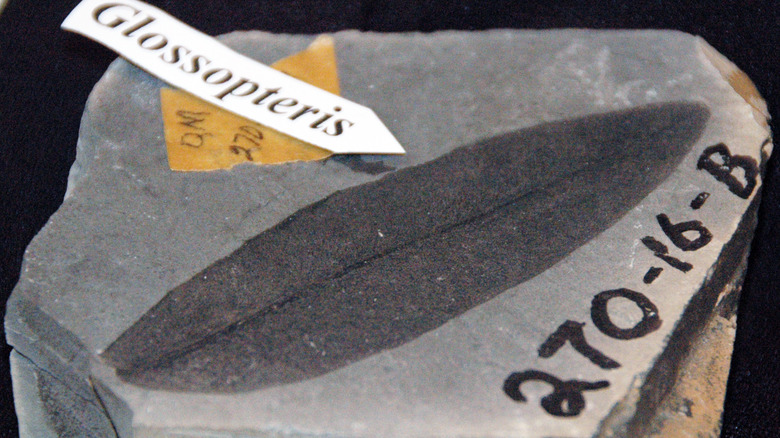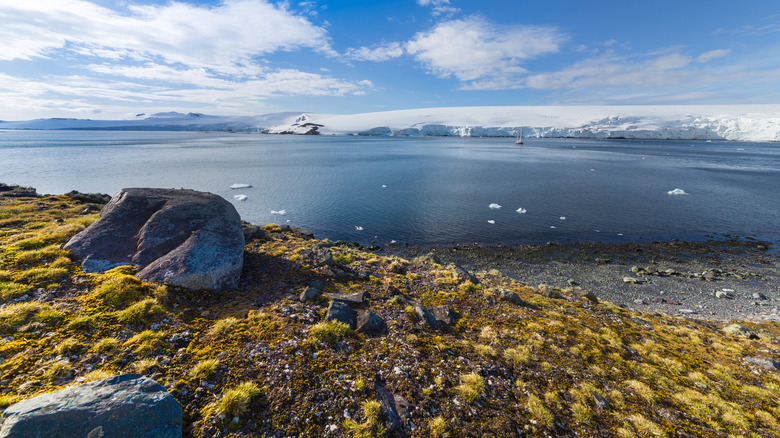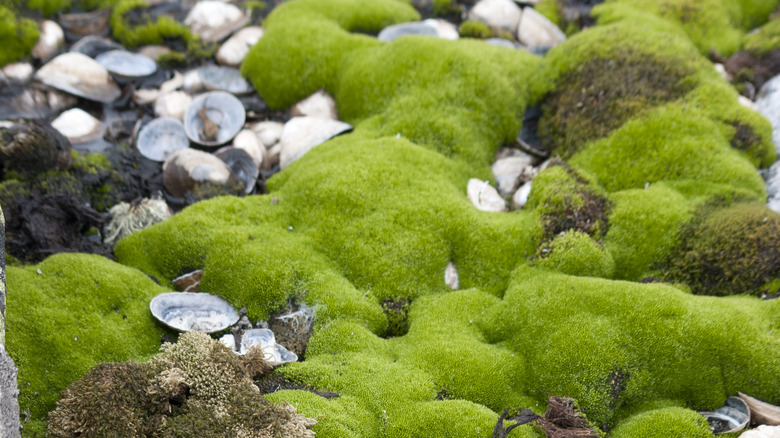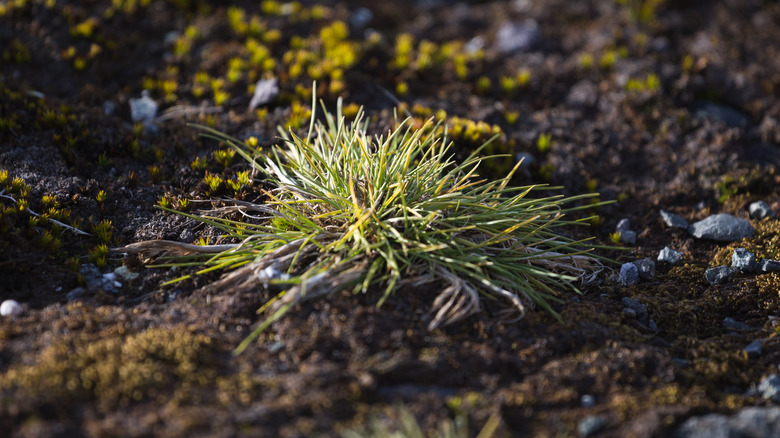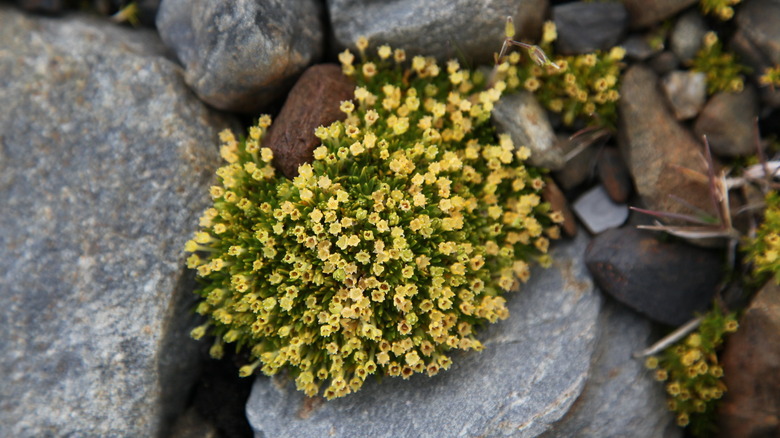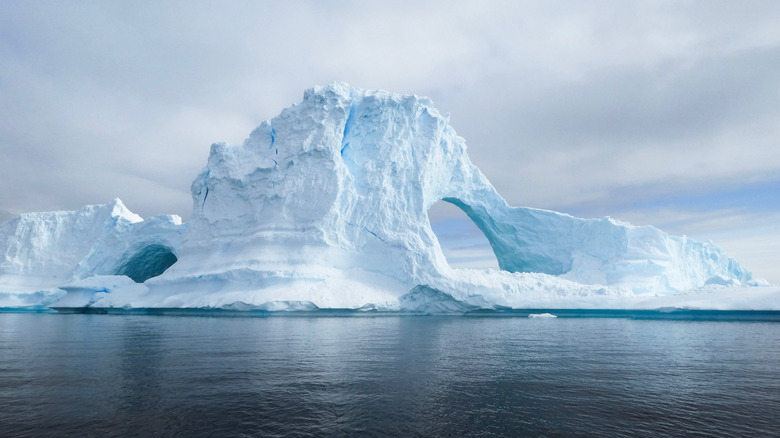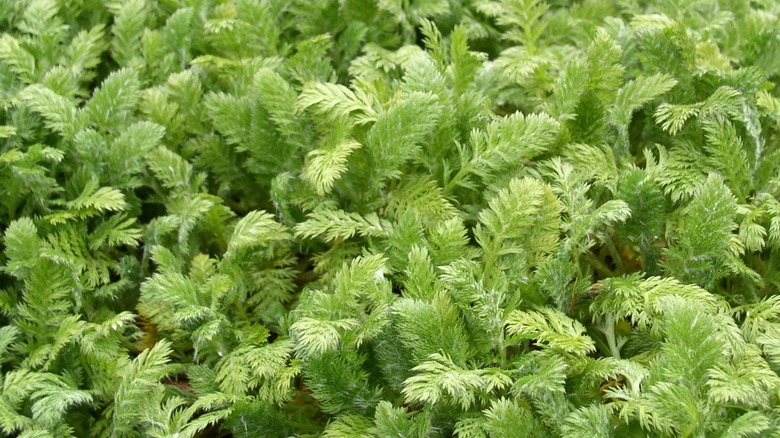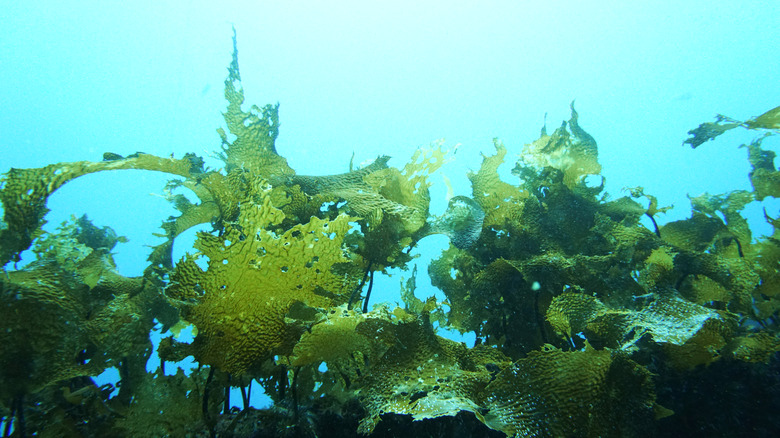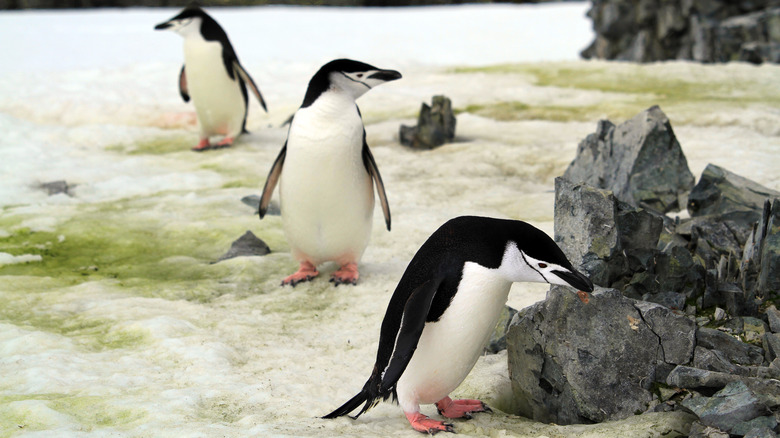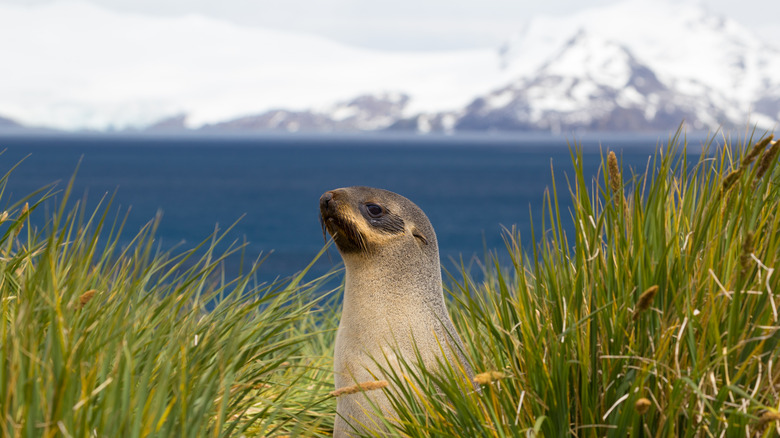How Climate Change Is Turning Antarctica Green
When you think of Antarctica, plants probably aren't the first things that come to mind. After all, Earth's icy southernmost continent is the largest desert in the world, not only bitterly cold but exceptionally dry; there are places in Antarctica that haven't seen liquid water for millions of years. All the same, Antarctica does have a few unique plant species all of its own, and in recent years, they've been thriving.
Climate change is dramatically altering the polar climate, and with record-low levels of ice, Antarctica's flowering plants are spreading at unprecedented rates. Only two species of complex, flowering plants call the continent home, but a warming climate is allowing them to expand. While most of Antarctica is still blanketed by a permanent layer of ice and snow, plants can now be found growing in places that were once thought completely inhospitable to them.
Of all of climate change's effects over the past decade, the thriving plants in Antarctica are one of the most pronounced — and alarming. But as a place with no permanent human residents, the entire continent remains out of most people's view, so many of us are unaware of how much it's changing. A study published in Current Biology explains this in some detail, describing how the continued warming is leading to more ice-free areas, leading to a "striking expansion" in the amount of area covered by plants. Researchers think it's mostly driven by warmer air over the continent during summer.
The lost forests of Antarctica
Antarctica hasn't always been a land of ice, and most of its scant handful of plants are true natives. They're actually post-apocalyptic survivors — their ancestors lived in a far more verdant Antarctica millions of years ago. Around 90 million years ago, the continent was home to a lush rainforest. At the time, most of Earth was covered by the ancient Tethys Ocean, and Antarctica was still physically attached to other continents such as Australia. Those ancient plants left behind abundant fossils, like the fossil leaf shown above.
The continent's last severe shift in climate began around 34 million years ago. Throughout the age of the dinosaurs, Earth's environment was much warmer. Even as it drifted south, Antarctica remained ice-free until the whole planet began to cool, and the poles began to slowly freeze into ice caps. Around 15 million years ago, its green and temperate forests slowly changed, becoming icy, probably resembling the forests found in Siberia today.
All the same, the climate of Antarctica has seemingly always been very sensitive to changes in Earth's climate. Occasional warm spells in the past have had dramatic impacts there. According to a study published in the journal Nature Geoscience, this included a brief period around 15 million years ago. Examining the soil, scientists discovered evidence of once-abundant plant life, suggesting that the coastline of Antarctica may have temporarily turned green, before continuing to become the frigid place it is today.
[Featured image by James St. John via Wikimedia Commons | Cropped and scaled | CC BY 2.0]
The ever-changing climate
Climate change has been steadily making its effects known worldwide, but the Antarctic is being hit hardest of all. As Discovering Antarctica explains, over the last half-century, Earth's south polar region has warmed more dramatically than anywhere else. The temperature there is currently rising five times as fast as the rest of the world, affecting the temperatures both on land and in the sea. This includes the Antarctic Circumpolar Current — a huge swirling vortex of water in the Southern Ocean that encircles the entire continent of Antarctica. As it circulates, it distributes heat and helps to keep Antarctica frozen. This disruption means that Earth's coldest continent is steadily becoming warm enough for plants there to grow extensively, with the potential for the continent to become greener than it has been for millions of years.
All of this also spells trouble for the rest of the world. More land for plants to grow on also means less ice, and less ice carries the threat of dramatically rising sea levels. Alarmingly, Antarctica has been warming far quicker than scientists predicted. One part of the continent where the ice has been melting at an alarming rate is the Antarctic Peninsula, a region where coastal ice shelves have been gradually disappearing, leaving glaciers unprotected. This is also the region where most of Antarctica's plants can be found, with most of the continent's more hospitable, ice-free land.
The green side of the white continent
Less than 1% of Antarctica is currently suitable for plants to grow. Most of that is in coastal areas, particularly on the Antarctic Peninsula and on outlying islands. Unlike most of the world, Antarctica has no trees or shrubs. The climate there is too hostile to support larger plants like these. Instead, Antarctic flora tend to be small, rugged little things, adapted to survive some of the planet's most bitterly cold conditions. Where most of Earth's ecosystems are dominated by flowering plants, Antarctica is mostly home to much simpler species like mosses and liverworts.
While lichens aren't really plants, they're some of the most prolific things that grow in Antarctica. Most of the continent's diversity is found on the Antarctic Peninsula, but lichens are hardy enough to survive in even more extreme conditions. That includes the famous Dry Valleys — some of Earth's oldest and driest landscapes.
Where most of Earth has grasses, Antarctica has mosses — around 100 species of them, in fact. These blanket the ground in some places, forming moss lawns. Per the Australian Antarctica Program, they're found most abundantly in places with plentiful meltwater, including those from glaciers. More primitive than grasses, the Antarctic mosses are specialized to survive in their hostile home environment. Their stems grow tightly together, helping them to retain water, and some have a yellow-orange color. This comes from carotenoid compounds which likely help protect them from the powerful sunlight they receive during the summer months.
Antarctic hair grass
While there may be nothing resembling true grasslands in Antarctica, it does have a single native grass species. Antarctic hair grass (Deschampsia antarctica) grows in small green tufts and is usually found in rough, rocky areas. As a grass, it can withstand being trampled on, and it tends to grow in the places where Antarctic animals can be found. Hair grass can even survive being pummelled by elephant seals, and tends to grow abundantly around penguin colonies, where it has ample amounts of fertilizer.
Antarctica's only grass has a few tricks to help it survive in the frigid environment. For one thing, it has a deep and complex root system, helping it find enough water and nutrients while also helping it stand up to the stormy polar environment. In winter, its roots become even more essential. To survive the cold, it loses all of its leaves, finding safety below the soil.
The roots of the Antarctic hair grass are the key to its survival, but they also pose a risk to Antarctic ecosystems. In the barren soil, plants need to be experts at harvesting nutrients, and this grass is adapted to be extremely efficient at taking in nitrogen. As the climate continues to warm, however, this also means that the grasses can easily outcompete mosses and other local species. Nitrogen is scarce in the polar soil, so if the grass takes up too much, there may not be enough left to go around.
Antarctic pearlwort
The second of Antarctica's two flowering species, Antarctic pearlwort is a pillowy little plant that never grows taller than two inches off the ground. It thrives on the rugged Antarctic coast, and blooms with big clutches of small, pale yellow flowers. There's no need for the flowers to be large, bright, or eye-catching because no bees will ever see them. In fact, Antarctica seems to have only one native insect species — and it has no wings! As a result, there are no pollinators in Antarctica, so where most plants need insect helpers, these polar flowers have to rely entirely on the wind to help them reproduce. Pearlwort (and hair grass) can also self-pollinate. In the icy polar landscape, they can't rely on their pollen being able to reach the flowers of another plant.
In the warming climate, Antarctic pearlwort has been flourishing. In recent years, it's been growing verdantly, spreading 10 times as fast as historical levels. Per a paper in the journal Biomolecules, there are several different factors helping the plants to thrive. As well as melting the ice, warmer temperatures mean that growing seasons have been increasing too; in such a harsh environment, plants take every opportunity to grow. Another less obvious influence is the weather. With the changing climate, Antarctica is getting more rainfall, making more nutrients available for the plants' roots to find.
[Featured image by Liam Quinn via Wikimedia Commons | Cropped and scaled | CC BY-SA 2.0]
Icy ecosystems
Antarctica's ecosystems are unique in the world. Most places in the world are completely dominated by vascular plants — the complex plants we're all familiar with, with roots, stems, leaves, and systems to circulate nutrients throughout their bodies. Antarctica, per a paper in the journal WIREs, is instead dominated by simple plants like mosses, and species that aren't true plants at all, like lichens and algae. The harsh Antarctic environment allows these simpler species, collectively known as non-vascular vegetation, to shine.
The delicate ecosystems of Antarctica are extremely sensitive to change. The biggest driving force of that change is air temperature, and summer air around the South Pole has been steadily warming. The changes in recent years have been so dramatic that even the climate scientists studying them have been surprised by what they've found. Per The Guardian, one lead researcher mentioned, "I was expecting an increase of these plants but not of this magnitude. We are receiving multiple evidences that a major change is occurring in Antarctica."
The cold climate is essentially the only thing that's been holding the more complex vascular plants back. As Antarctica warms, there's a chance they could start to drown out their simpler cousins. While no one's sure exactly what the long-term effects will be, it's certain those effects will be dramatic ones. A study in Current Biology mentions quite ominously, "future warming will trigger significant changes in these fragile Antarctic ecosystems."
Invasive species in Antarctica
Antarctica may be one of the most inaccessible places in the world, but it still receives a lot of visitors. As part of their preparation for the journey, all are cautioned specifically about the risks of accidentally introducing invasive species. This can be surprisingly easy to do. With plants, all it takes is a single seed from the bottom of a shoe, and as the climate continues to change, this is an increasing concern. As conservationist Jasmine Lee explains in a Science Daily article, "Unfortunately, the milder climates will also lower the barrier of invasion for foreign plant and animal species." In other words, as the continent becomes more habitable for its own native species, it becomes more attractive to invaders too.
Antarctica already has a few invasive species, and that includes two plants, Leptinella scariosa and Leptinella plumosa. These two are originally from places farther north, like Argentina and the subantarctic Falkland Islands. Known as button weeds, they're related to daisies, and have already been found growing on the Antarctic Peninsula. Because of how delicate the polar ecosystems are, combined with the ruinous effects invasive species can have, scientists dedicate a lot of resources to both studying and preventing them. As well as keeping track of existing invasive species, Antarctic researchers also try to predict any other species that may potentially become invasive in the future.
[Featured image by Nweider via Wikimedia Commons | Cropped and scaled | CC BY-SA 4.0]
Unwelcome sea vegetables
Beneath the icy polar seas, the marine environment off the Antarctic coast is still not very well known. There's a lot of coastline and only limited opportunity to observe it directly. Technically, seaweeds aren't actually plants but algae, but they're essential to marine ecosystems, and new species of Antarctic seaweed are still being discovered growing in the freezing cold waters. A different kind of seaweed, however, is one of Antarctica's most concerning invasive species.
Wakame is best known as a tasty sea vegetable popularly used in Japanese cuisine. As an invasive species, however, it can be decidedly unsavory. Outside its native habitat, wakame grows prolifically, outcompeting local species and damaging biodiversity as a result. At the same time, though, it's not entirely predictable and can sometimes even have beneficial effects.
Invasive marine species can be difficult to prevent. They can easily arrive as hitchhikers on the hulls of any of the ships that visit Antarctica every year, but there are completely natural ways for invasive species to arrive too, and these are far more difficult to predict. Kelp rafts, patches of free-floating seaweed, can drift across long distances. They can be carried by ocean currents, and invasive seaweeds like wakame can easily arrive in new places this way, as passengers. While the cold Antarctic climate usually prevents these invaders from taking root, the warming seawater means that they're more likely to survive the journey, and will have an easier time getting established once they arrive.
Changing a land of ice into a green land
Quite simply, climate change is going to turn the coasts of Antarctica green again, for the first time in millions of years. While flowering plants are still hindered by the ice, simpler species are already beginning the process. The vanguard is made up of snow algae. This is exactly what it sounds like — a type of algae that grows on the snow itself, staining it green. Snow algae blooms can be just as extensive as algal blooms in the ocean, and the largest can also be seen from space. Researchers expect that as Antarctica warms, these blooms will become larger and more extensive, as well as growing at higher altitudes.
At the same time, Antarctica is experiencing record low levels of ice. In 2023, Antarctica had the lowest levels of sea ice ever recorded, and the highest temperature anomaly of anywhere on the planet. As ice continues to recede, researchers worry that proliferating plants will impact biodiversity, as ecosystems fall out of balance and a few species start to outcompete the others.
As snow algae flourish, more complex plants do too. Antarctic mosses have been slowly but steadily spreading. While plants still only grow on a tiny fraction of Antarctic land, that's likely to increase dramatically and contribute further to the changing climate. And as the mosses continue to grow, so too do the flowers, ever more rapidly.
The future of Antarctica
Antarctica is usually seen as a pristine wilderness, mostly untouched by humanity. Unfortunately, that isn't really true anymore. Climate change is a global problem, and it's set to change Antarctica irreversibly. Climate models suggest that by the end of this century, the continent may have three times as much ice-free land as it currently does, and plants will rapidly take root on it. What's more, this may even be a conservative prediction. Scientists have a track record of underestimating how much Antarctica might change, and it's already been warming faster than models have predicted.
Sadly, it's likely the unique ecosystems of Antarctica are doomed. Global greenhouse gas emissions are higher than ever before, and are still continuing to increase. At this point, per a study published in Nature, the melting of the Antarctic ice is set to be "rapid and unstoppable." As sea levels rise and ice levels fall, more and more of Antarctica will become free to turn green.
Unfortunately, it's difficult to predict how exactly the southernmost part of the world might look in the future. Making accurate predictions requires background information, and researchers simply don't have enough to say anything with certainty. There's no way to know how Antarctica's flora may look in the future. Both native and invasive species will continue to grow, and it's likely that more invasive species will eventually arrive. As Antarctica's coasts slowly turn green, though, one thing can be almost guaranteed — it will never be the same again.
